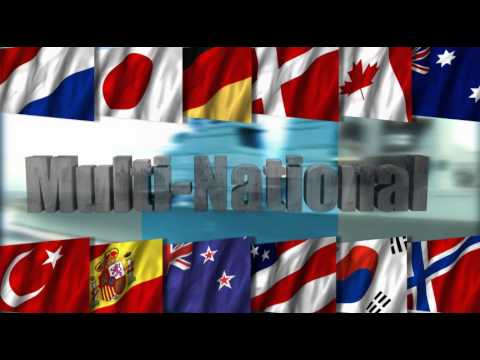
This article was last updated on April 16, 2022
Canada: ![]() Oye! Times readers Get FREE $30 to spend on Amazon, Walmart…
Oye! Times readers Get FREE $30 to spend on Amazon, Walmart…
USA: ![]() Oye! Times readers Get FREE $30 to spend on Amazon, Walmart…
Oye! Times readers Get FREE $30 to spend on Amazon, Walmart…
Those of us who live in the West generally only get small glimpses into the Russian mindset, so it is not terribly surprising that the Kremlin’s response to the recent news that Washington was pulling out of the Treaty Between the United States of America and the Union of Soviet Socialist Republics on the Elimination of their Immediate-Range and Shorter-Range Missiles aka the INF Treaty received almost no coverage even though the Kremlin’s full response is available on the English language version of its website.
Here are some highlights from the Kremlin’s response which was crafted during a high level meeting between Vladimir Putin, Russia’s Foreign Minister Sergei Lavrov and Russia’s Defence Minister Sergei Shoigu as shown here:
Russia has some very pressing concerns about recent developments in the United States nuclear weapons program:
“Another matter of concern for us is that only recently, just a year ago, the United States in its 2018 Nuclear Posture Review set the task of developing low-yield nuclear weapons, and it is probable that intermediate-range missiles will serve as a means of delivery for these weapons. It was also announced only recently that this provision of the US nuclear doctrine is beginning to materialise with missiles of this kind entering production.”
According to the Kremlin, Russia has its own version of the evolution of America’s nuclear philosophy and how it has handled its obligations under three key nuclear weapons treaties:
1.) Anti-Ballistic Missile Treaty (ABM) – “It all started with the 1972 Anti-Ballistic Missile Treaty, when the US decided to withdraw from it in 2002, as you know all too well. This was done despite numerous initiatives by the Russian Federation at the UN General Assembly to save the ABM Treaty. The UN General Assembly passed a number of resolutions supporting the ABM Treaty. However, this did not stop the United States from withdrawing from it.
As a partial replacement for the ABM Treaty, the US and Russia signed a joint declaration that same year, 2002, on new strategic relations with a promise to settle all issues related to the so-called third positioning area of the missile-defence system being deployed in Europe at the time. The declaration provided for holding consultations as a way to reach common ground. This did not happen due to the unwillingness of the United States to take up Russia’s concerns in earnest.
In 2007, we made another gesture of good will at your instructions by coming forward with an initiative that consisted of working together to resolve the problems related to US missile defence system’s third positioning area in Europe. Once again, the US backed out of this proposal.
However, at the Russia-NATO Summit in Lisbon in 2010, we once again called for Russia, the US and Europe to work together on a continental missile-defence system. This call was not heeded. Nevertheless, two years later, in 2012, at the NATO Summit in Chicago it was NATO that called for dialogue with Russia on missile defence. However, all this good will boiled down to the US insisting that we simply come to terms with their missile defence approach, despite all the obvious risks and threats to our security posed by this approach.
Let me remind you that in 2013 Russia once again called on the US Department of State to open consultations, and came forward with concrete proposals. There was no reply. And in 2014, the United States brought the dialogue on missile defence to a halt and declared the intention to deploy its positioning areas in Europe and Asia, while also strengthening other systems, including in Alaska and on the east coast.”
2.) Treaty on the Non-Proliferation of Nuclear Weapons (NPT) – “Talking about other essential international security and strategic stability instruments, the approach adopted by the United States to performing its commitments under the universal Treaty on the Non-Proliferation of Nuclear Weapons has been a matter of concern for Russia. In fact, despite numerous reminders on our part, the United States commits serious violations of the Treaty in its actions within NATO. The Treaty commits nuclear powers to refrain from transferring the corresponding nuclear technologies.
Despite these provisions, NATO engages in so-called joint nuclear missions whereby the United States together with five NATO countries where US nuclear weapons are deployed conduct nuclear weapons drills with countries that are not part of the five nuclear-weapons states. This is a direct violation of the Non-Proliferation Treaty.”
3.) Comprehensive Nuclear Test-Ban Treaty (CTBT) – “Another treaty that had a special role in removing the threat of nuclear war, or, to be more precise, whose preparation was a source of hope for addressing these threats, was the Comprehensive Nuclear-Test-Ban Treaty [CTBT]. The United States did not ratify it even though doing so was among Barack Obama’s campaign promises when he ran for president.
Right now, this instrument is completely off the radar, since the United States has lost all interest in any consultations on joining this Treaty. Being a party to the CTBT and acting in good faith, Russia holds special events at the UN General Assembly every year in order to promote the Treaty and mobilise public opinion in favour of its entry into force, which requires the United States to join it, among other things.”
Let’s now look at one of Russia’s immediate concerns as shown in this exchange:
“President of Russia Vladimir Putin: Foreign Minister Sergei Lavrov, please provide an update on the Treaty on the Elimination of Intermediate-Range and Shorter-Range Missiles, and the disarmament dossier in general. What is going on in terms of limitation of offensive arms?
Foreign Minister Sergei Lavrov: Mr. President, regarding the Intermediate-Range Nuclear Forces Treaty, as you know, it has been in force since 1988. It had an indefinite term. According to the information at our disposal, the United States has been violating the Treaty since 1999, when it started testing combat unmanned aerial vehicles that have the same characteristics as land-based cruise missiles banned by the Treaty.
The United States went on to use ballistic target missiles for testing their missile defence system, and in 2014 they began the deployment in their missile defence system positioning areas in Europe of Mk 41 vertical launching systems. These launchers are fully suitable as they are for Tomahawk intermediate-range attack missiles.
Vladimir Putin: And this is an outright violation of the Treaty.
Sergei Lavrov: This is an outright violation of the Treaty. Launchers of this kind have already been deployed in Romania, and preparations are underway to deploy them in Poland, as well as Japan.” (my bold)
Let’s take a closer look at the Mk 41 Vertical Launching System which has been deployed in Europe by the United States. Here is a video from Lockheed Martin showing the Mk 41 VLS in action (accompanied by plenty of shots of the American flag):
Here is a product sheet from United Defense showing the capabilities and specifications of the Mk 41 VLS:
The Mk 41 VLS was originally designed as a multiple missile-launching system for the United States Navy’s Aegis-equipped guided missile cruisers to provide air threat protection for naval battle groups. The wide selection of missiles that can be used in the MK 41 are pre-loaded into canisters which are then loaded into the individual cells of the launcher. Launcher cells are fitted to ships in 2 rows of 4 cells (i.e. an 8 cell module) with the modular design allowing for the custom installation of any number of modules. Multiple missiles can be launched simultaneously and any missile/any cell can be launched at any time, independently of each other. The system is designed to be used for anti-air warfare, anti-submarine warfare, ballistic missile defense and land attack/strike.
Here is a photo showing the aft Mk 41 VLS (61 cells) aboard the USS Vicksburg:
Here is a diagram showing the major components of the Mk 41 VLS system as used by the United States Navy:
The Mk 41 VLS is also used by America’s allies as shown here:
While the Mk 41 VLS was originally designed for naval operations, there is also a land-based variant named Aegis Ashore Missile Defense System aka AAMDS. The system incorporates land-based versions of the various components that are used on ships including the deckhouse, AN/SPY-1 radar, the Mk 41 VLS and Standard Missile-3 interceptors. It is intended to serve as a midcourse defense against medium- and intermediate-range missiles. The system has been installed at a Deveselu in Romania and consists of three MK 41 VLS tubes with eight cells per tube for a total of 24 interceptors. The Romanian installation was tested in December 2015. Additional sites are planned for Redzikowo, Poland and in December 2017, Japan’s Cabinet approved plans to install two Aegis Ashore systems that are scheduled to be operational by 2023. These two systems are being installed to defend against threats from North Korea and threats from China’s advanced cruise missile program, however, their proximity to Russia is also of interest.
Here is a 2014 photo of the infrastructure of a test version of the Aegis Ashore deckhouse located at the Pacific Missile Range Facility:
Here is a video showing the facility in Romania:
It really is no wonder that Russia is concerned about the emplacement of the Aegis Ashore system on its doorstep.
It is interesting how the Western media provides us with only a single side of the nuclear weapons story. Rather than presenting a balanced viewpoint where we hear both sides of the story regarding nuclear treaty violations by both Russia and the United States, we are subjected to what can best be termed “fake news” because it is so unbalanced as to be next to useless when it comes to better understanding the looming nuclear arms escalation.
Click HERE to read more from this author.
You can publish this article on your website as long as you provide a link back to this page.

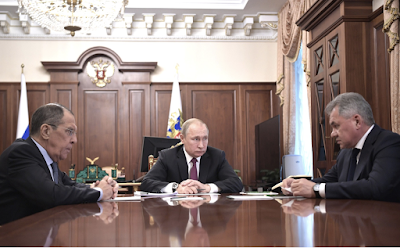
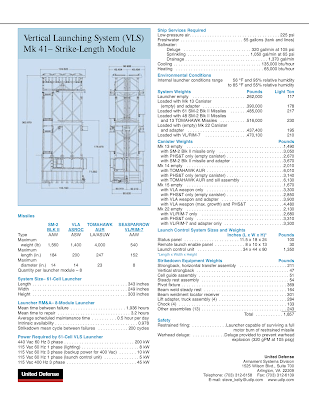
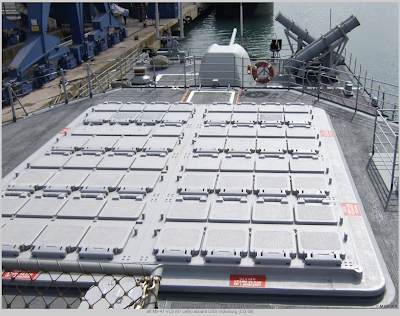
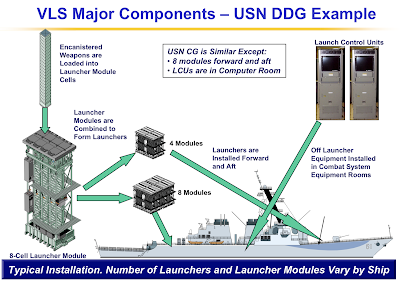

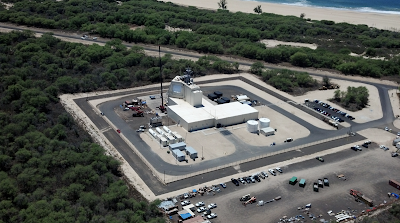
Be the first to comment